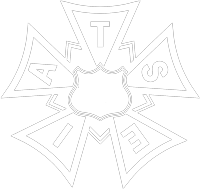H.R. 748, the $2.2 T “CARES Act” was signed March 27, 2020. The document is 880 pages and moved through the House and Senate with bipartisan effort. Below are summaries of the relief provisions for individuals and small businesses of the Senate’s $2.2T trillion coronavirus aid. Some of the conditions in the CARES Act and the Family’s First Act are now being challenged. I will update as new relevant information becomes available.
I. INDIVIDUALS
1. Individual Rebates
a. How much will be provided to individuals?
Under Sec. 6428, Recovery Rebates for Individuals, most individuals earning under $75,000 can expect a one-time cash payment of $1,200 and $500 for each qualifying child. The income threshold is $112,500 for a head of household and $150,000 for joint tax returns. That means a family of four earning less than $150,000 can expect $3,400. The checks are reduced by 5% of gross income after that and disappear completely for individuals making more than $99,000 and couples making more than $198,000.
b. What are income brackets based on?
The cash payments are based on either your 2018 or 2019 tax filings. If an individual or married couple have filed their 2019 income taxes, their
eligibility will be based on their 2019 income. Otherwise, it will be based on their 2018 income. People who receive Social Security benefits but don't file tax returns are also eligible and their checks will be based on information provided by the Social Security Administration.
2. State Unemployment Benefits
a. How much will individuals receive in increased unemployment benefits?
Sec. 2104, Emergency Increase in Unemployment Compensation, adds $600 per week from the federal government on top of whatever base amount a worker receives from their state unemployment program.
b. How long will the increase to unemployment benefits last?
The increased supplement to state unemployment benefits will be provided for up to four months.
c. Do self-employed individuals, sole proprietorships and independent contractors qualify?
Yes, the bill expands eligibility to self-employed individuals, sole proprietorships, and independent contractors.
II. SMALL BUSINESS GRANTS AND LOANS
1. What emergency grants are available for small businesses with less than 500 employees?
The bill provides $10 billion for grants of up to $10,000 to provide emergency funds for small businesses to cover immediate operating costs. Eligible entities for the emergency grant include businesses with
less than 500 employees and do not have limitations on nonprofit organizations. Presumably, Unions may be eligible for these emergency grants.
2. What loans are available for small businesses with less than 500 employees?
a. Forgivable Loans
There is $350 billion allocated for the Small Business Administration to provide loans of up to $10 million per business. Any portion of that loan used to maintain payroll, keep workers on the books or pay for rent, mortgage and existing debt could be forgiven, provided workers stay employed through the end of June 2020.
b. Relief for existing loans
HR 748 provides $17 billion to cover six months of payments for small businesses already using SBA loans.
c. Are the small business loans available to Unions?
Section 1102 of HR 748 includes certain non-profits as eligible for covered loans. However, non-profits are defined as “an organization that is described in section 501(c)(3) of the Internal Revenue Code of 1986 and that is exempt from taxation under section 501(a) of such Code.” Therefore, unless a Union is a classified as a 501(c)(3) charitable organization and exempt under section 501(a) of the IRS code, they are not qualified for a small business loan under HR 748.
III. BUSINESSES OF ALL SIZES
1. What tax credits are available for all businesses?
Section 2301 of HR 748 establishes a fully refundable tax credit for businesses of all sizes that are closed or distressed to help them keep workers on the payroll. The goal is to get those employees hired back or put on paid furlough to make sure they have jobs to return. The credit covers to 50 percent of payroll on the first $10,000 of compensation, including health benefits, for each employee.
For employers with more than 100 full-time employees, the credit is for wages paid to employees when they are not providing services because of the coronavirus. Eligible employers with 100 or fewer full-time employees could use the deduction even if they aren't closed
a. Are tax credits available for Unions as tax-exempt organizations?
Section 2301 (c)(2)(C) defines “Tax-Exempt Organizations” as an organization described in section 501(c) of the Internal Revenue Code of 1986 and exempt from tax under section 501(a) of such Code. As such, tax-exempt organizations meeting this definition are covered as “eligible employers” which are eligible for the tax credit provided by Section 2301 of HR 748. Therefore, unions would be eligible to receive the employee retention credit as described above.
2. What tax deferrals are available for businesses?
Employers and self-employed individuals would get to defer the 6.2 percent tax they pay on wages that is used to fund Social Security.
a. Is the payroll tax deferral available for Unions as tax-exempt organizations?
Unlike the employee retention credits, there is nothing in HR 748 indicating that tax exempt organizations would be qualified for the deferral on employer payroll taxes.
IATSE Local 728
Dedicated to Motion Picture Set Lighting since 1939
Address
IATSE, Local 728
Studio Electrical Lighting Technicians
1001 W. Magnolia Blvd.
Burbank, CA 91506
(818) 954-0728
Map
Conditions of Use | Site Map | Privacy Policy & Terms of Use
Phone
Office:
818-954-0728
800-551-2158
FAX:
818-954-0732
Local 728 Bulletin
The color version of the Local 728 Bulletin is available online.
